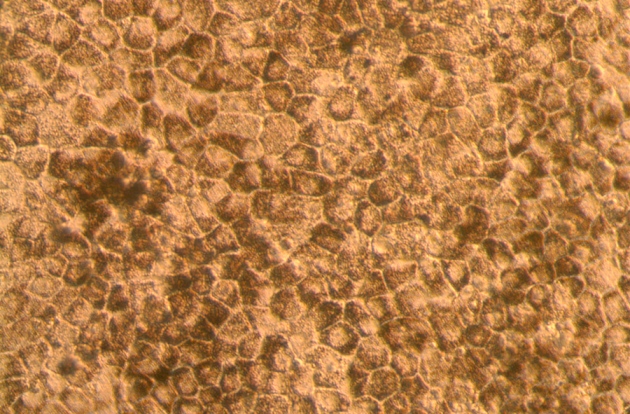A company that has spent more than 20 years trying to develop treatments based on embryonic stem cells is taking encouragement from small, preliminary tests of the cells in people with progressive vision loss. If the technique continues to impress in larger trials designed to assess its effectiveness, it could become the first therapy derived from embryonic stem cells to reach the market.
A study of four patients, published in Stem Cell Reports on 30 April1, shows that injection of retinal cells derived from stem cells is safe for people with macular degeneration. The report follows similar results from a trial in 18 patients that was published last October2.
Both studies were meant to assess safety only, and neither included a control group. In the latest study, conducted by researchers in Korea and the United States, three participants were able to read 9–19 more letters further on an eye chart a year after treatment but two of the three also gained some ground in their untreated eyes.
“This bodes well,” says Robert Lanza, chief scientific officer at Ocata Therapeutics in Marlborough, Massachusetts, and an author of the study. “But I think we need to interpret this improvement cautiously until more controlled studies are done.”
The sample size is too small to warrant much excitement, cautions ophthalmologist Tien Yin Wong of the Singapore National Eye Centre. “At this stage it’s hard to say if the visual improvement will be sustained,” he says. “But it’s very promising.”
Chequered past
For a company that has fought as long as Ocata Therapeutics known until November last year as Advanced Cell Technology any sign of success is a boon. Like many firms that struggle to bring a new form of therapy to market, the company has faced repeated financial crises over its 21-year history. In 2009, the company’s stock had lost so much value that the firm was delisted from the NASDAQ exchange. Last year, its chief executive left amid charges of financial misconduct, even as the company was still wrangling with lawsuits related to the actions of its previous chief.
But on 26 February, Ocata was relisted on the NASDAQ, and the company reported in its 2014 annual report that it had access to enough cash to operate through early 2016. Lanza says that Ocata is pursuing partnerships with pharmaceutical firms, and plans to launch larger clinical trials of its therapy in a few months this time with a control group that will receive a sham injection of stem cells.
Others are pursuing similar therapies. Last year, Japanese researchers launched a macular-degeneration trial that assessed sheets of retinal cells prepared from induced pluripotent stem cells, which are derived from adult cells. Other studies are testing cells derived from embryonic stem cells against diabetes and severe heart failure.
Ocata’s approach is to use coax embryonic stem cells to develop into the cells of a critical, pigmented layer of the retina called the retinal pigment epithelium. In people with macular degeneration, this layer is gradually lost along with the photoreceptors and other cells important for vision that the retinal pigment epithelium supports. Ocata does not coax its cells to form sheets; instead, it injects individual cells directly into the eye.
Previous studies had been done mainly in white patients. The latest results from Ocata and its collaborators in Korea are important, Wong says, because Asian patients tend to have different genetic risk factors for macular degeneration.
In the Korean study, two people had a disease called Stargardt macular dystrophy, and two had age-related macular degeneration. Both conditions would be expected to progressively worsen eyesight, and the best that Lanza had hoped for from any of the company’s trials was a slowing of this degradation.
So he was surprised to see evidence, albeit slight, that the treatments may actually improve vision. “The paradigm had been: you lose your photoreceptors and they’re gone. There’s nothing you can do,” he says. If the results hold true, it may be that the cells help to stabilize photoreceptors that are on the verge of being lost, he says, thereby providing some improvement.







